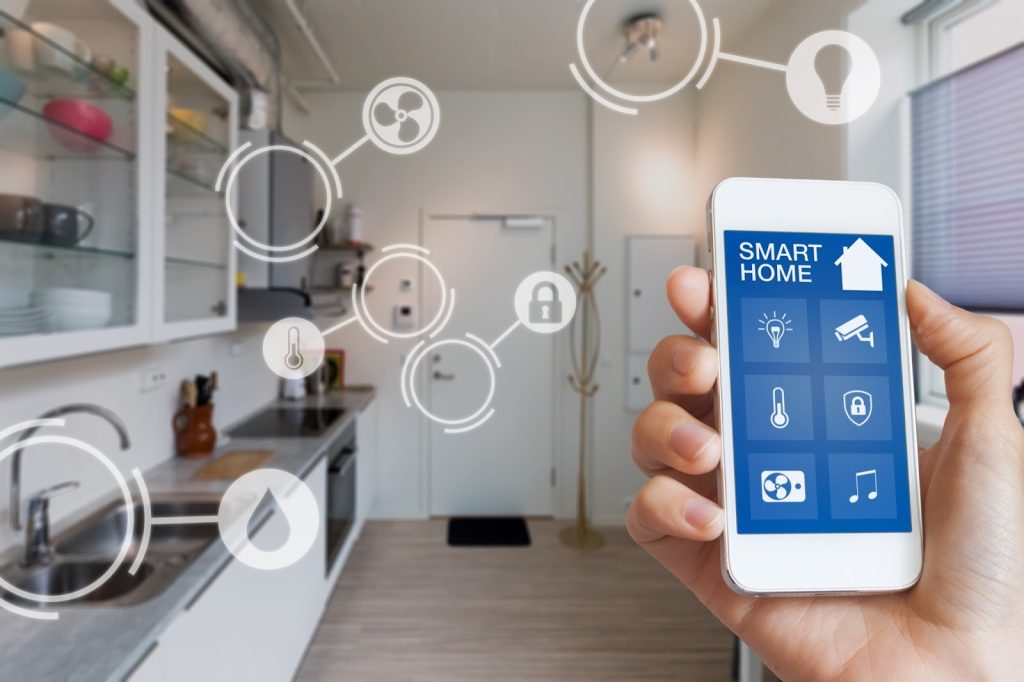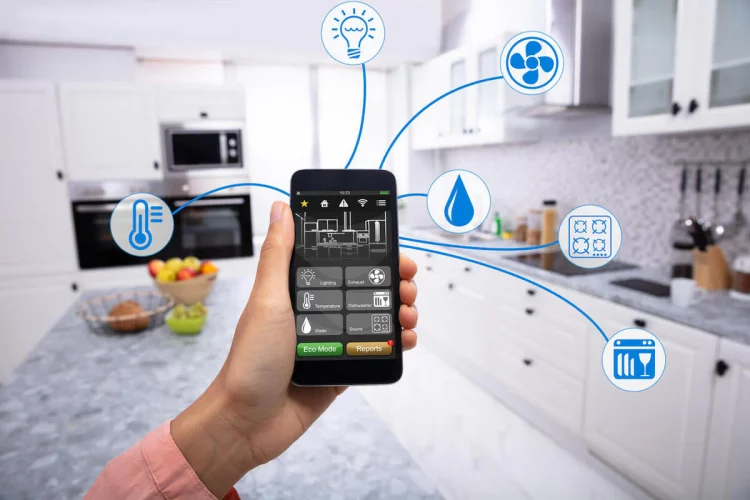Introduction: The Era of Smart Homes
The concept of a “smart home” has evolved from a futuristic dream into an everyday reality, integrating seamlessly into our daily routines. As the world becomes more connected, home automation technologies—driven by the Internet of Things (IoT)—are transforming the way we interact with our living spaces. What was once considered a luxury or a novelty is now a practical tool that enhances convenience, security, energy efficiency, and comfort. In this article, we will explore how smart home technology is penetrating our daily lives and the profound impact it is having on homes, families, and lifestyles across the globe.
1. The Rise of Smart Homes: A Global Shift
In recent years, the rapid advancement of technology has paved the way for homes to become more than just places to sleep and eat. With the advent of smart home devices, entire households are now becoming more intelligent, responsive, and intuitive. According to a report by Statista, the global market for smart home devices is expected to reach over $53 billion by 2022 and continue growing as more consumers adopt connected technology.
These smart devices are powered by the IoT, where everyday objects are equipped with sensors and connectivity, allowing them to interact with each other and the user via smartphones, voice assistants, and more. From lighting systems that adjust to the time of day, to thermostats that learn your preferences, the integration of technology into homes is not only becoming more sophisticated but also more affordable.
2. Key Components of a Smart Home
A smart home is made up of interconnected devices designed to improve the overall quality of life. These devices cover a wide range of applications and functionalities, with the most popular being:
Smart Lighting Systems
Smart lighting solutions such as Philips Hue and LIFX are revolutionizing the way we control the ambiance of our living spaces. These lighting systems allow users to adjust the brightness, color, and even set schedules remotely via apps or voice commands. Beyond convenience, they also contribute to energy efficiency by enabling automated lighting schedules.
Smart Thermostats
Devices like the Nest Thermostat are helping homeowners reduce their energy consumption by learning their routines and adjusting temperatures accordingly. These systems not only improve comfort but also help lower utility bills by optimizing heating and cooling based on the actual usage patterns of the household.
Smart Security Systems
Security is one of the most compelling reasons why people are embracing smart home technology. Devices such as Ring doorbell cameras, smart locks, and motion sensors give homeowners peace of mind by allowing them to monitor their property in real-time. They can also set up alerts for unusual activity and remotely lock or unlock doors, creating a safer environment for families.
Voice Assistants
Amazon Alexa, Google Assistant, and Apple Siri are some of the most popular voice-controlled assistants today. These platforms are central to the smart home ecosystem, as they provide users with hands-free control over their devices, from adjusting the thermostat to ordering groceries or controlling lights.
Smart Appliances
From refrigerators that monitor food inventory to washing machines that can be controlled remotely, smart appliances are making everyday chores easier and more efficient. Samsung’s Family Hub fridge is an example of an appliance that goes beyond simple functions, offering touchscreens, internet connectivity, and integration with other smart devices.

3. Enhancing Convenience and Comfort
The primary draw of smart home technology is the enhanced convenience it provides. By automating routine tasks, smart homes can save time and reduce the cognitive load on users. Whether it’s turning off lights, adjusting the temperature, or even playing music, these tasks can now be managed effortlessly through a central app or voice commands.
Customized Experiences
Smart homes can be programmed to provide highly personalized experiences. For instance, smart speakers can recognize different voices and provide tailored responses or recommendations. Smart lighting can adjust to your mood, and smart thermostats can preemptively adjust the room temperature based on your daily habits.
Remote Control and Monitoring
One of the greatest conveniences offered by smart home technology is the ability to control and monitor devices remotely. Whether you’re at work or on vacation, you can check the status of your home, lock doors, or adjust your thermostat through your smartphone. This functionality has not only added convenience but also peace of mind.
4. Energy Efficiency and Sustainability
In a world increasingly focused on sustainability, smart homes are playing a crucial role in reducing energy consumption and promoting eco-friendly practices. Smart energy management systems can optimize energy use in homes by adjusting appliances, lights, and heating systems to match actual needs, thereby reducing waste.
Smart Energy Management
Smart home systems, such as smart meters and energy monitors, help homeowners track their electricity usage in real-time. Devices like the Ecobee smart thermostat can learn patterns and optimize energy use by adjusting the temperature based on when people are home or asleep.
Solar Integration
Incorporating solar panels and batteries into a smart home can further enhance sustainability. Smart systems can manage the energy generated by solar panels, storing excess power for later use, and can even decide when to draw energy from the grid to optimize savings.
5. Security and Privacy Concerns
While the integration of smart home technology offers numerous benefits, it also raises important questions about security and privacy. Smart devices are constantly connected to the internet, making them susceptible to hacking or data breaches.
Data Privacy Risks
Many smart devices collect vast amounts of personal data, from your daily routines to your preferences. This data can be exploited for advertising purposes or, worse, fall into the hands of malicious actors if security measures are insufficient. To mitigate these risks, manufacturers and users alike must prioritize data encryption and security protocols to protect sensitive information.
Vulnerabilities in Smart Devices
Another concern is the potential vulnerability of smart devices to cyberattacks. For example, hackers could potentially gain access to a smart lock or security camera, compromising the security of the home. This makes it essential for users to regularly update firmware, use strong passwords, and set up secure networks to safeguard their devices.
6. The Future of Smart Homes: Trends and Innovations
The smart home industry is far from static; it continues to evolve rapidly, driven by advances in AI, 5G connectivity, and machine learning. Here are some of the exciting trends and innovations that will shape the future of smart homes:
AI Integration
Artificial intelligence is expected to play a central role in future smart homes. AI-powered assistants will become more intuitive and capable of learning from past interactions to anticipate user needs. This could range from adjusting the lighting based on your preferences to anticipating when you need groceries based on your consumption patterns.
5G Connectivity
The rollout of 5G networks will significantly improve the performance of smart home devices. With faster and more reliable connectivity, devices will become even more responsive, providing a seamless experience for users. Additionally, 5G will allow for more sophisticated applications, such as remote surgeries or real-time monitoring of elderly individuals at home.
Robotics and Automation
The future may also see the integration of robots in smart homes, from robotic vacuum cleaners like Roomba to humanoid assistants capable of performing complex tasks. Automation will extend beyond just controlling devices; it will include the execution of physical tasks, leading to an even more autonomous home environment.
7. Challenges and Barriers to Widespread Adoption
While the promise of smart homes is compelling, there are still several challenges that could hinder their widespread adoption:
Cost
The initial investment in smart home devices can be prohibitive for some households. High-end smart appliances and integrated systems often come with a steep price tag, limiting access to wealthier demographics.
Interoperability
One of the biggest obstacles in smart home ecosystems is the lack of standardization. Many smart home products are designed to work within specific ecosystems, such as Amazon Alexa or Google Home, and may not be compatible with devices from other manufacturers. This can create fragmentation, frustrating users who want a seamless experience.
Complexity
For some people, the complexity of setting up and managing a smart home can be a barrier. While many smart devices are designed to be user-friendly, the integration of multiple devices across various platforms can be overwhelming, especially for non-tech-savvy individuals.
Conclusion: The Ongoing Transformation of Our Living Spaces
Smart home technology is fundamentally reshaping how we live, work, and interact with our homes. From energy efficiency to enhanced security and convenience, the benefits are undeniable. However, with these advancements come challenges, including concerns about privacy, security, and cost. As technology continues to evolve, we can expect even greater innovations that will make our homes smarter, safer, and more sustainable. The integration of AI, 5G, and robotics will push the boundaries of what is possible, transforming homes into intelligent environments that can anticipate and meet our every need.
As we move further into the future, one thing is certain: the smart home revolution is just beginning, and it will continue to transform our daily lives for years to come.











































